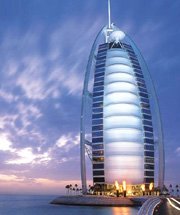
- Home
- Travel Packages
- Top Destination
-
Travel Attraction
By Category
Top Attraction

- Travel Agents
- Car Rentals
- Hotels
Lebanon is officially called as Lebanese Republic and is located in East Mediterranean region. It touches Syria from North and East and Israel from south. Beirut, the capital city of Lebanon was declared No.1 travel destination by New York Times in 2009 for its nightlife and hospitality. Baalbek Temple of Jupiter situated in Lebanon attracts many tourists every year. Once known as the Switzerland of the East, Lebanon reached its highest number of tourists recently in 2009.
Lebanese Pound (LBP)
10,452 square kilometers (4,036 sq mi)
4,125,247
Arabic
+961
EET (UTC+2)
Lebanon has a Mediterranean climate. In coastal areas, winters season get rainy and cool while summers are hot and humid. Entire Lebanon receives heavy rainfall except the north eastern regions.
Geographically, Lebanon’s lies between 33° and 35° N latitudes, and 35° and 37° E longitudes.
Territory and Capital : Lebanon consists of four different types of physiographic areas namely- the coastal plain, the Beqaa valley, Lebanon mountain range and Anti-Lebanon Mountains. These mountains have an average height of 3,088 meters (10,131 ft) in the north and width ranging between 10 km to 56 km.
Beirut is the capital city of Lebanon.
Suitable Visiting Seasons (months) : If you wish to go for sightseeing, March to May and September to November is the best time when climate is moderate. But if you wish to visit only city of Beirut then the hotter months June to September are the excellent ones when you can enjoy swimming, sunbathing and nightlife of Beirut.
Winters between December-January are the best time for snowfall lovers and enjoying festive season as a relief to chilly evenings.
The Rafic Hariri International Airport of Lebanon is a busy location. It is well connected by road to other cities like Zahle, Sidon, Baalbek, etc.
In Lebanon, Visa and Passport terms and conditions keep changing in short durations. People of all countries require Visa to visit Lebanon except Gulf countries barring Yemen.